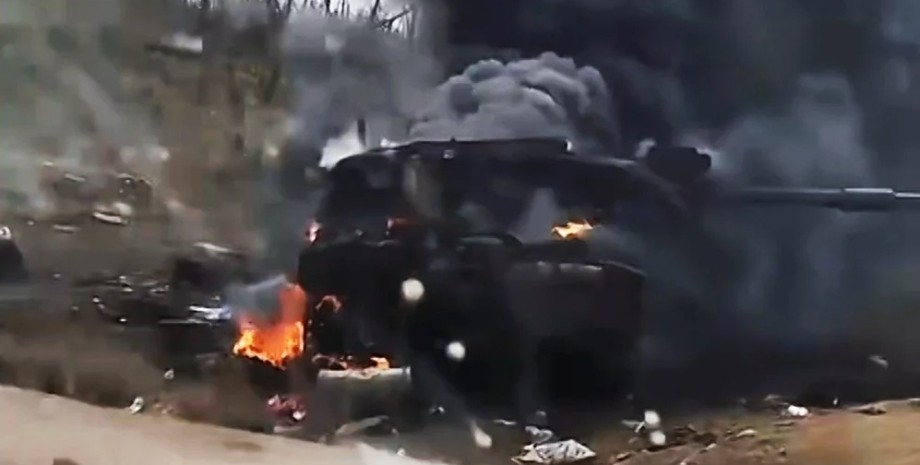
To prevent Russians from getting it: the Challenger 2 tank that burned down in Ukraine could have been mined – media
Back in January, British journalists reported that Kyiv and London were negotiating on Challenger 2 tanks. Then the British allegedly demanded that if the tanks were hit, Ukrainian soldiers would have to do everything possible to remove the equipment from the battlefield.
For the second day in a row, the topic of the British Challenger 2 tank that burned down on the Ukrainian front is being discussed in the media. An extremely unexpected version appeared on the Internet that the British allegedly planted explosives on the main mechanisms of the tank so that in the event of its defeat, the Russians would not get hold of the secret components and assemblies of the Challenger 2. Bulgarian Military observers talked about the rumors surrounding the British tank that burned down on the front line.
The authors of the article write that this version is supported by the fact that Challenger 2, like other military technologies, has equipment and control systems that should not fall into the wrong hands. But at the same time, the source of the rumor raises questions. It turned out to be the Russian resource OverClockers, which wrote that Ukrainian tankers were allegedly reluctant to get into British vehicles.
“The explosives covered the main mechanisms, and the control was not given to the crew. It is possible that all this is just a rumor, but in general, there is nothing surprising in the fact that we did not find many people willing to ride a mined tank,” the Russians said in their publication.
However, experts emphasized that the Russian publication did not provide any sources to substantiate its claims, so it is likely nothing more than speculation by Russian propagandists.
“The mining of the tank’s mechanisms remains an unproven allegation based solely on assumptions and rumors,” Western experts say.
Destroyed Ukrainian Challenger 2 outside of Robotyne, most likely from the 82nd Air Assault Brigade. pic.twitter.com/KInjnmfs4F
– OSINTtechnical (@Osinttechnical) September 5, 2023
British tabloid version
At the same time, the authors of the publication noted that back in January, the British tabloid The Sun shared information about Kyiv and London’s joint plans for Challenger 2 tanks. At the time, journalists reported that the Ukrainian side demanded that if the tanks were hit, the soldiers would have to do everything possible to remove the equipment from the battlefield.
According to British military rules, when a tank is damaged, the first thing to do is to try to make immediate repairs on the spot. Otherwise, the tank must be transported using specialized armored repair equipment specifically designed for such cases.
However, it remained unclear what to do in a critical situation when it would be impossible to remove the equipment.
“In the most catastrophic situation, the tank could be destroyed as the defenses collapse and the Allied forces are forced to retreat,” The Sun wrote.
In the end, a plan consisting of two options was allegedly developed. The first option involves the strategic deployment of British tanks in the deep rear, which would protect them from direct attack. In the second variant, each tank can be equipped with an evacuation vehicle, ready to quickly move it away at the first sign of danger.
If the Ukrainian military could not cope with this task, it was supposed to involve a PMC that would take responsibility for the salvage of the damaged tank.
On September 6, British Defense Secretary Grant Shepps confirmedmedia reports on the destruction of the first Challenger 2 tank in Ukraine on Sky News.
As for the fate of the crew, he said that the crew of the destroyed tank was not injured and all the soldiers are alive, which indicates a high level of tank survival and emphasizes the high performance and quality of Western equipment supplied to Ukrainians by the allies. At the same time, Shepps suggested that the tank was probably destroyed by Russian artillery.

